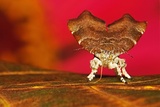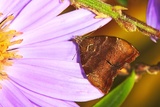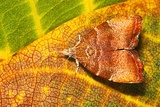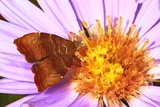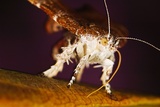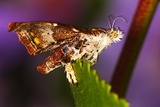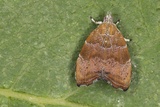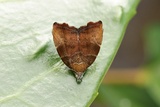Choreutis nemorana (Hübner, 1799) Species
Last modified: March 15, 2025, 3:08 p.m.
In Belgium recorded for the first time in 2009 (LG). Since then, the species has gradually expanded its area also by the increased use of Ficus carica as an ornamental plant in private gardens.
Hitherto a fairly common species in the northern part of the country and very rare in the south.
Details
- Classification
- Family: Choreutidae > Subfamily: Choreutinae > Genus: Choreutis > Species: Choreutis nemorana
- Vernacular names
- Vijgenskeletteermot, Gevlamde skeletteermot (NL), Fig-leaf skeletoniser (EN), Feigen-Spreizflügelfalter (DE)
- First mention in Belgium
- De Prins W., Baugnée J.-Y., Georis A., Spronk René & Spronk Raphaël 2014. Choreutis nemorana (Lepidoptera: Choreutidae) well established in Belgium. — Phegea 42(2): 29–32. On page 29. view page
- Status
-
Naturalised
Distribution
Bionomics
The eggs are deposited singly on the upperside of a leaf.
First instar larvae eat the upper parenchyma but leave the underside of the leaf intact. Later instars live under a slight netting or web on the upper surface of a leaf and sometimes move to another leaf. They usually fold the leaf upwards and spin the fold to form a shelter. Larvae of the first generation usually eat holes in the leaves while larvae of the summer generation have also been observed eating on the figs, either just from the outside or boring into the fruit. Larvae react very violently while disturbed and often fall to the ground. The last instars make a longitudinal spun fold at the underside of the leaf, spin a thick silken cocoon in the fold, and pupate therein.
The moths are active during the day and can be observed flying around the food plant. The adults of the summer generation hibernate in thatch, amongst dead leaves, or in hedgerows.
Flight periods
The adults fly in two generations a year from early May till the beginning of July, and from mid-August till early October. The autumn generation is less abundant.
Habitat
Gardens, roadsides and even in cities.
